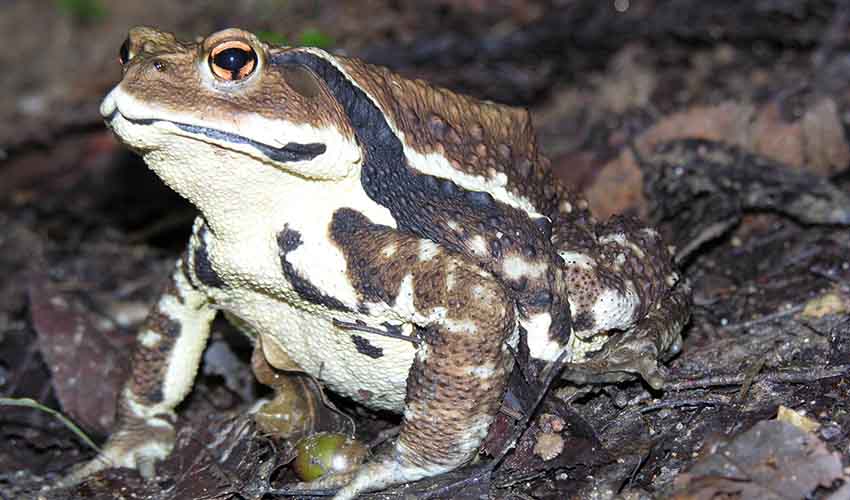Found across much of Honshu, Shikoku, and Kyushu, it is a large, warty toad and one of the biggest amphibians in Japan. Its skin is rough, brown to gray, often mottled with darker blotches—perfect camouflage against soil, rocks, and forest floors. Like other true toads, it has parotoid glands behind the eyes, which secrete toxins as a defense against predators. This gives it a reputation as “unpleasant to eat” for most animals, though snakes like the Japanese keelback can sometimes prey on it.
Behaviorally, the Japanese Common Toad is a terrestrial species, spending much of its life on land in forests, fields, and even gardens, though it returns to ponds, ditches, and rice paddies during the breeding season. It is most famous for its dramatic spring breeding migrations, when huge numbers of toads travel to water bodies, where males gather and call in chorus to attract females. The females lay long strings of eggs, often several meters in length, which develop into tadpoles that thrive in shallow water. Outside of the breeding season, these toads are mostly nocturnal, feeding on insects, worms, slugs, and other invertebrates, making them a helpful ally for farmers and gardeners in controlling pests.
A fascinating fact about this species is that it has several subspecies. The typical Bufo japonicus japonicus is found in central Japan, while Bufo japonicus formosus lives in eastern Japan and tends to be slightly smaller and differently patterned. These subspecies show how the toad has adapted to Japan’s varied environments, from lowland rice paddies to mountain forests. Despite these differences, all Japanese toads share the same sturdy build and warty, toxin-protected skin that gives them their rugged, resilient image.
Distribution
 Japan
Japan Japan
JapanAnything we've missed?
Help us improve this page by suggesting edits. Glory never dies!
Suggest an editGet to know me
Terrestrial / Aquatic
Altricial / Precocial
Polygamous / Monogamous
Dimorphic (size) / Monomorphic
Active: Diurnal / Nocturnal
Social behavior: Solitary / Pack / Herd
Diet: Carnivore / Herbivore / Omnivore / Piscivorous / Insectivore
Migratory: Yes / No
Domesticated: Yes / No
Dangerous: Yes / No




